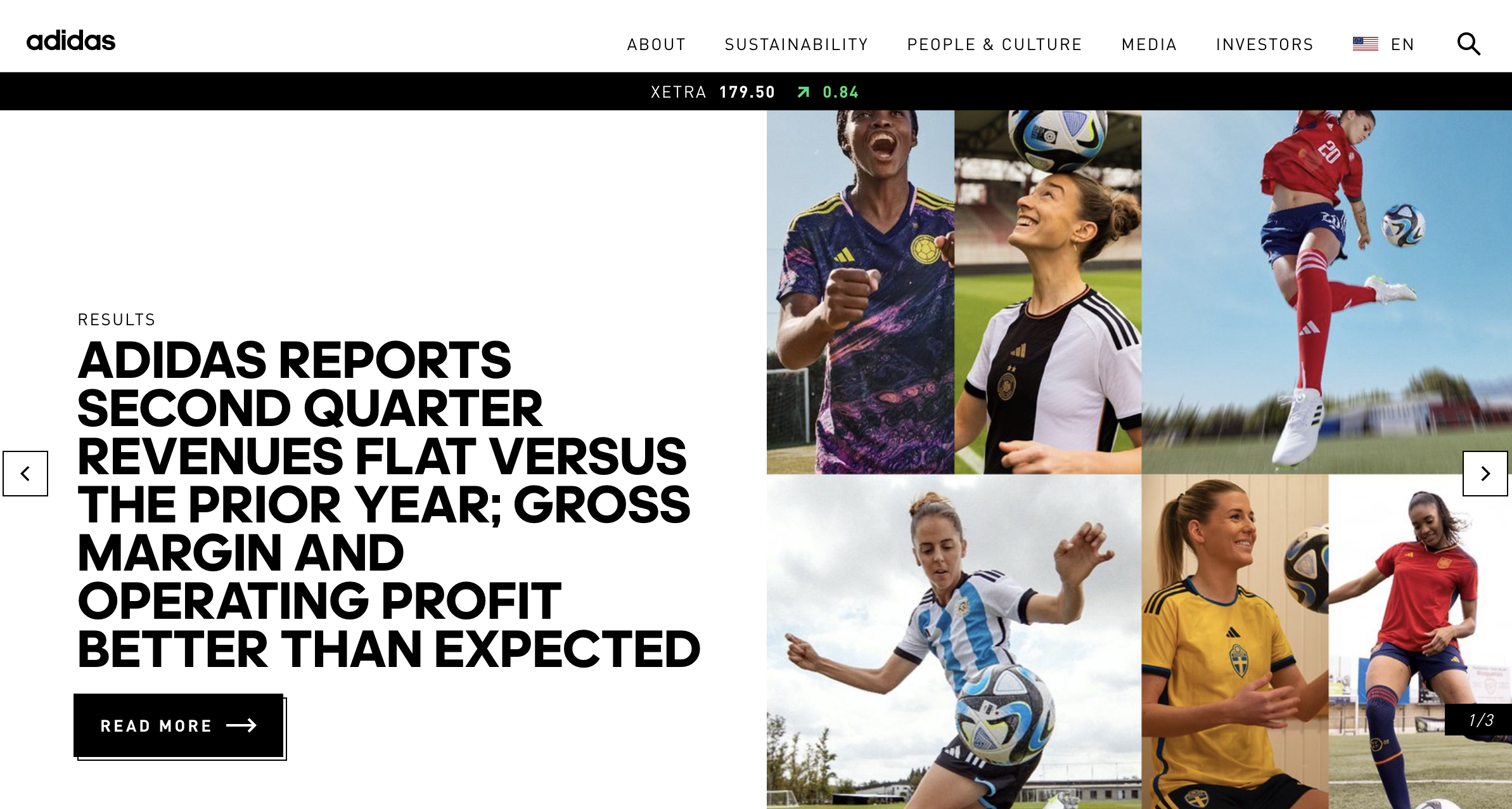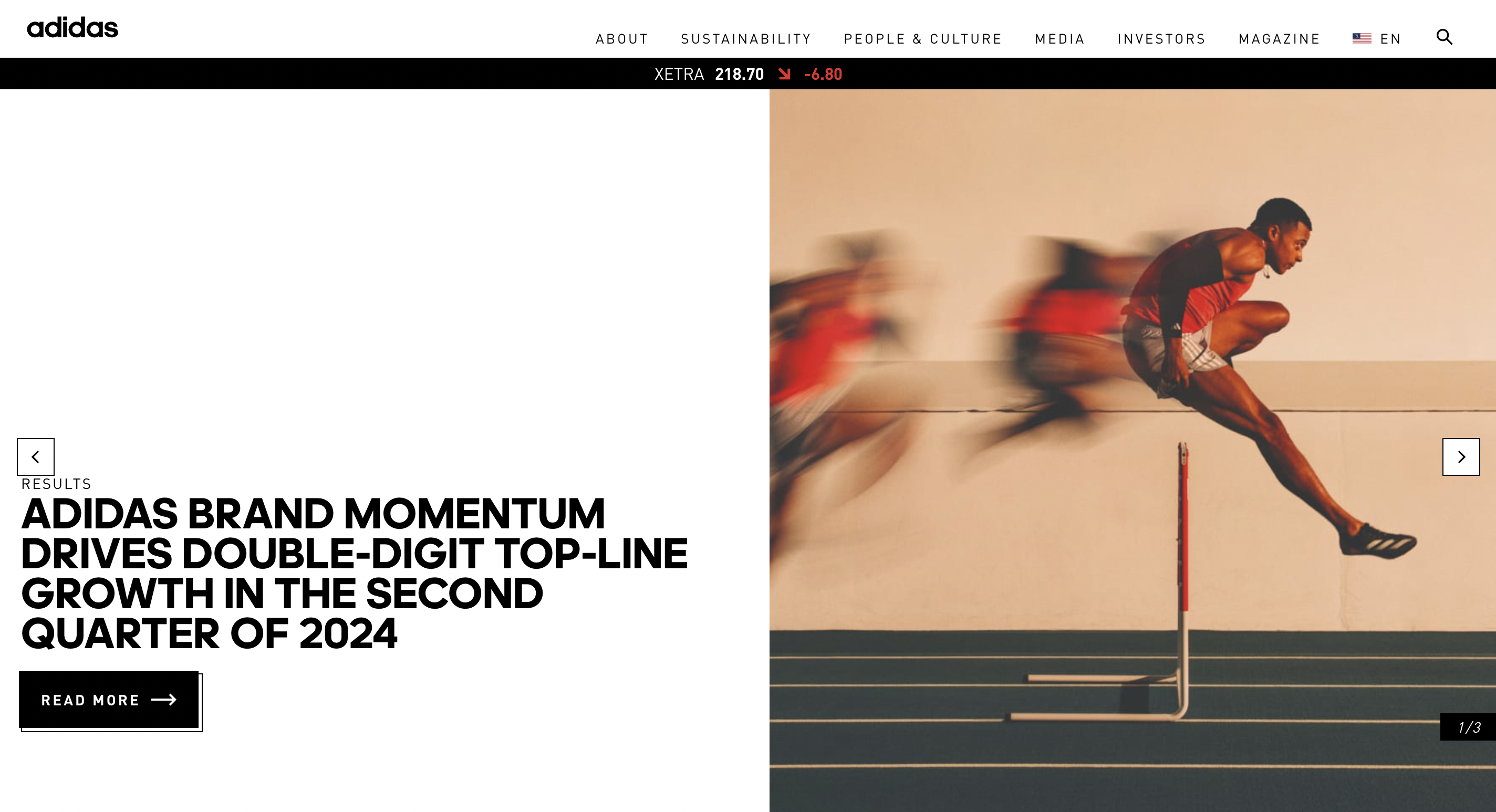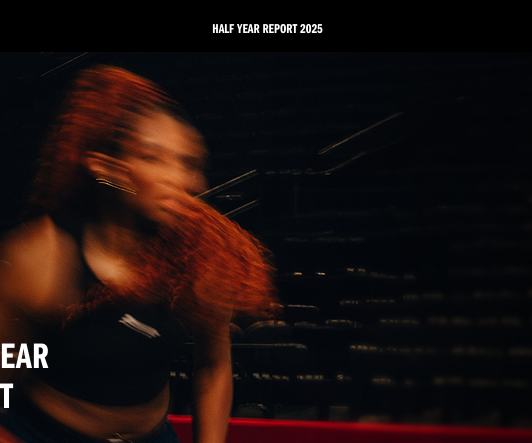On August 3rd, the German sportswear giant Adidas released its financial data for the second quarter and first half of the fiscal year 2023.
In the second quarter of the 2023 fiscal year:
- Revenue decreased by 5% to 5.343 billion euros. Excluding exchange rate effects, revenue remained the same as the same period last year.
- The increase in gross margin by 0.6 percentage points to 50.9% was mainly due to the company’s implemented pricing strategy and improved channel composition. The data for 2022 was 50.3%.
- Operating profit was 176 million euros, with an operating profit margin of 3.3%.
- Net profit from continuing operations decreased to 96 million euros, compared to 360 million euros in 2022.
In terms of channels, excluding exchange rate effects, wholesale channel sales decreased by 10% in the second quarter. Meanwhile, strong growth from e-commerce (+14%) and company-owned retail stores (+19%) drove a 16% increase in Direct-to-Consumer (DTC) channel revenue compared to the previous year.
Looking at categories driven by strong growth in football, basketball, tennis, and American sports, footwear revenue increased by 1% in the second quarter. Clothing sales decreased by 3%, with continued clothing market overstock. The company will maintain a conservative sales strategy to increase mid-term sales volume and profitability. Accessories sales increased by 8% this quarter, driven by growth in the football segment.
Additionally, despite the high demand for licensed products of brands such as Samba, Gazelle, and Campus, the revenue of the lifestyle category declined in the second quarter. Furthermore, while Adidas began gradually expanding its product categories this quarter, the total sales volume remained only a small portion of the overall business.

In terms of markets, without considering exchange rate effects, North America saw a 16% decrease in sales due to elevated inventory levels and significantly reduced sales. The Greater China region saw a 16% increase in revenue due to double-digit sales growth in wholesale and company-owned retail. Although DTC achieved double-digit growth, sales in Europe, the Middle East, and Africa region still declined by 1%. Additionally, Asia-Pacific revenue increased by 7%, and Latin America continued to grow at a double-digit pace (+30%), reflecting strong growth in wholesale and DTC channels.
Furthermore, inventory continued to improve significantly in the second quarter, with a year-on-year increase of only 1% to 5.54 billion euros, nearing the level of 5.483 billion euros in 2022. Excluding exchange rate effects, inventory increased by 6% compared to the previous year, while inventory units decreased by 11%, reflecting Adidas’ strong progress in improving inventory conditions. In the first six months of this year, Adidas significantly reduced purchases and tactically reused existing inventory, resulting in a reduction of inventory levels by over 400 million euros.
Looking at the first half of 2023, sales revenue slightly decreased by 3% to 10.617 billion euros. Excluding exchange rate effects, first-half revenue remained the same as the same period last year. However, there were unfavorable comparisons, including the absence of Yeezy business revenue in the first quarter of 2023, which contributed to a loss of approximately 400 million euros in revenue due to the termination of regular Yeezy business in the first half-year comparison.
During the first half of the year, the company’s gross margin decreased by 2.3 percentage points to 47.9%, compared to 50.1% in 2022. Supply chain costs increase, negative currency effects, increased inventory subsidies, and promotional activities put pressure on the gross margin development during the six-month period. However, increased sales volume, higher discount levels, and price increases partially offset this pressure, significantly moderating the gross margin in the first and second quarters.
The operating profit for the first half of Adidas in 2023 fell to 236 million euros, compared to 828 million euros in 2022. The operating profit margin for the first half-year was 2.2%, compared to 7.6% in 2022.
Meanwhile, the net profit from continuing operations for the reporting period was 73 million euros, compared to 671 million euros in 2022. The basic and diluted earnings per share from continuing operations decreased to 0.29 euros, compared to earnings of 3.47 euros per share in 2022.

Looking ahead, Adidas reiterated the financial guidance updated on July 24th for the full year of 2023. Without considering exchange rate effects, revenue is expected to decrease at a mid-single-digit rate, whereas the company previously estimated a high single-digit rate of decrease in revenue.
This adjustment reflects the positive factors of the company’s first batch of Yeezy inventory sales and the slightly better-than-expected development of Adidas’ business in the first half-year. Bjørn Gulden, CEO of Adidas, stated, “The sale of the first part of the Yeezy inventory did of course help both our top and bottom line in the quarter.” The sales of Yeezy shoe inventory in the second quarter were about 400 million euros, which helped Adidas reduce the expected loss for the whole year from 700 million euros to 450 million euros.
On August 2nd, Adidas launched the second batch of Yeezy inventory. Throughout August, Adidas will offer the series of products through its own e-commerce channels and selected wholesale partners’ digital platforms. If successful, this sale will further improve the company’s performance.
However, Adidas also expressed that macroeconomic challenges and geopolitical tensions still exist. Risks of recession in North America and Europe and uncertainties in the recovery of the Greater China region remain. Furthermore, the development of the company’s revenue will continue to be affected by measures to significantly reduce high inventory levels. Therefore, Adidas expects the basic operating profit to remain near the break-even level.
Gulden commented, “Our story is the same as we said at the beginning of the year: We are using 2023 to clean inventories, work on future products, improve the way we work, build better partnerships, and lay the foundation for a better 2024 and a good and profitable Adidas in 2025 and 2026.”
As of August 3rd, Adidas’ stock price rose by 0.47% to 179.5 euros from the previous day. The latest market value is 32.047 billion euros.
|Source: Adidas official financial report, Reuters, Fashion Network
|Image Credit: Adidas
|Editor: Liu Juan



